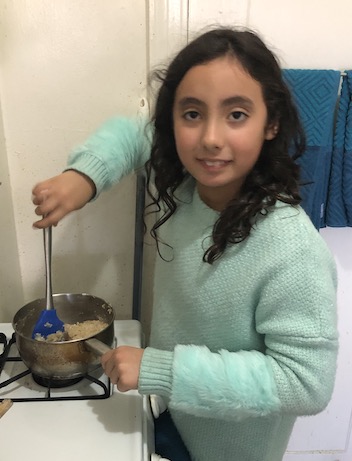unpolished thoughts 2/16/2019
I’ll be hanging out with my daughter for most of today. It’s a lot easier than it used to be.
For one thing, as she gets older, it’s easier to engage her on topics that also interest me. I’ve never really felt talented at the art of pretending to be fascinated by the same things as kids.
But another factor is more essential.
I’m better than I used to be at staying connected to myself in the moment between stimulus and response.
Quite often, hanging with a ten-year-old, inspires impatient or sarcastic comments about one thing or another.
Looking back, there are many things I’ve said to my daughter that I wish had never escaped my mouth. But these days, more often than not, I manage to keep them to myself.
It’s made a big difference for both of us.
As I continue to practice this kind of inhibition, I’ve noticed that it sometimes provokes a very palpable feeling of disappointment. Just like it’s hard to take pleasure in refusing chocolate, denying impulses to say or do can bring up another voice.
But my snarky comment would’ve been so clever!
What’s gratifying is to notice how quickly that hollow argument melts away. If it doesn’t slip my mind completely, it won’t take long for me to see how foolish it would have been to sling that mud into the world.
Inhibition might not be always feel good in the moment, but it changes everything.
There are days where dozens of shitty remarks fill my mind, but aren’t spoken aloud. What if, instead, I had voiced every single one of them?
The entire interaction with my daughter would be flipped on its head.
When I spend time with Maria and we both enjoy ourselves – even while I continually hear the voice of her grumpy dad in my head – I realize that inhibition has truly cleared a space for us that wouldn’t have otherwise existed.
The first and most crucial step is simply to pause – to hear the silence before my words, to feel the space before I move.
When the inner voice speaks offensively, but we succeed in containing it, sometimes we still judge ourselves for it. But there is no need for that.
We simply need to say, “Hold on a minute” – and sometimes a minute might be more than we need.
That brief pause where we don’t speak or act may well be filled by the words or actions of someone else. A new pathway may open because we didn’t follow the impulse that would have closed it off.
Sometimes we succeed in stopping ourselves once, but hear the inner voice continuing to insist, “I haven’t said my piece yet!”
This means inhibition needs to be refreshed.
Other times we may decide to compromise. Perhaps the irritation should be voiced – but can it be reworded, or expressed with a softer tone?
Perhaps we can talk about it, rather than say it directly:
“Maria, I’m noticing that I’m starting to feel impatient with you.”
We can’t alway speak with bubbles and pink flowers, but how often do we really need the daggers and mosquitoes?
How often are those sharp edges really necessary to guide our children?
Don’t they deserve a little more space to make mistakes without being cut down for it?
With practice, we can learn to bite our tongues without making them bleed. It doesn’t have to feel forced.
Just wait.
Each time you do, a little more space is created – for you and everyone else around you.
Learn to cultivate that space, and new possibilities arise. More harmonious words and deeds have the opportunity to be born.
A brief experiment might provide a useful insight:
Turn your head once to the left and once to the right. Determine which direction feels easier.
Now close your eyes and only think of turning your head to the easy side. Use the kinesthetic memory of the action you just performed to imagine the sensations that accompany the movement.
After a pause, with eyes closed, think of turning your head in the other direction. Without actually moving, can you feel the first glimmers of straining somewhere inside you that weren’t present when you turned the head the other way?
It’s possible that this distinction will feel too subtle for you at first.
You might have better luck if you substitute a different movement that you can perform on either side of the body, comparing the two sides to find the easier pattern, then observing yourself in the act of imagining one movement, then the other.
But what’s important is not whether you make a clear distinction right away. What’s important is the act of listening to that place between thought and action, between stimulus and response.
It’s well worthwhile to make a practice of paying attention to this place because this is precisely where we determine the quality of our lives.
************************
After editing this post, and after my day with Maria, by chance I found an accidental video in my phone that captured part of our interaction today. It was a heartwarming discovery for me. Listen in if you’re curious.
************************
You can receive my unpolished thoughts in your email on a daily basis when you subscribe to my mailing list.
*New subscribers also receive a series of welcome emails which include two free full-length Feldenkrais audio lessons.*
(and make sure to check the box to get the unpolished thoughts RSS feed just below where you enter your email address)
